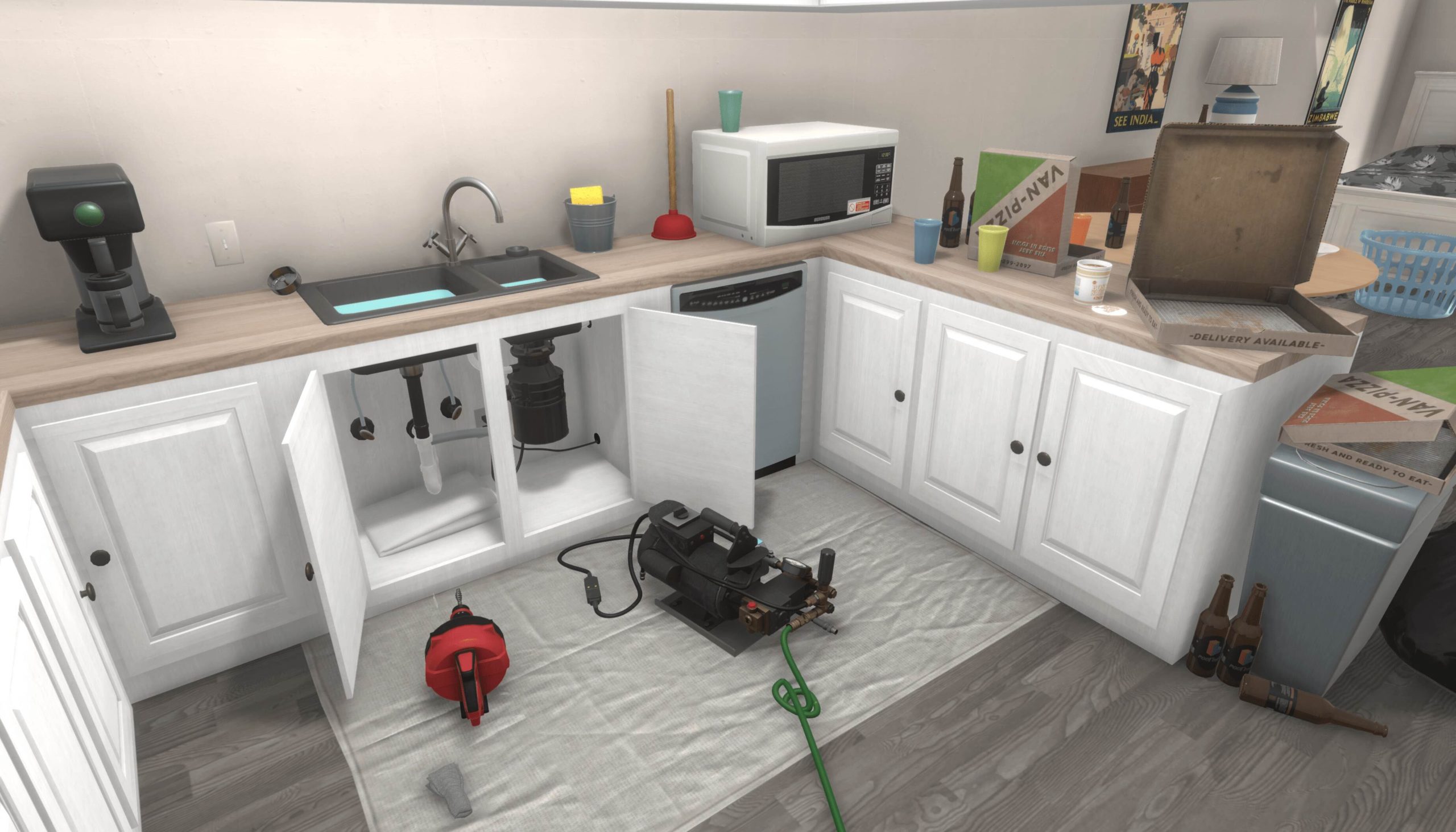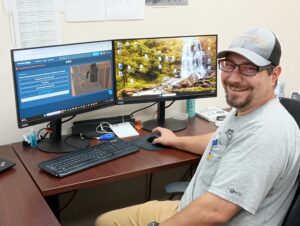Learning with training simulations is proven to help knowledge retention, but learning becomes amplified when 3D art looks and behaves like the real-world.
Speaker: Jon Farrell, Director of Art, Interplay Learning
My name is Jonathan Farrell, and I am the Director of Art at Interplay Learning.
I’ve been with Interplay for almost four years now, but before I started with Interplay, I worked in the animation industry.
I worked for Pixar for a small bit on the film WALL-E, and after that, I worked for DreamWorks for almost seven years on many of their movies, such as Megamind and Madagascar.
As the Art Director at Interplay, I’m in charge of a small team that works together to create digital assets for our 3D simulations.
These digital assets are made to look and behave realistically. When our users interact with them in the simulations, they feel like they’re in a real environment and get the best learning experience possible.
Q: What are the different ways that 3D art can help improve education and the learning process in the skilled trades?
The 3D artwork that we create for our simulations at Interplay is critical to the learning process.
The skilled trades are all about hands-on — learning is more about getting in and doing something for real with your hands and tools.
Because of that, the 3D art assets that we create need to look and behave realistically. Technicians and other people interacting with the art in our simulations can have a realistic experience that will be parallel to what they’ll experience in real life.
Q: Why is it so critical that our sims look as close to the real world as possible?
A big part of my job, and what I’m constantly working towards improving, is getting the simulations that we create to look and behave more realistically.
The reason I feel that’s so important is that when a technician or a skilled tradesperson is learning how to do something, if they’re learning in a simulation that doesn’t look and behave the way things are going to be in real life, then they’re not going to be learning as well as they could be.
It’s proven that learning through simulation actually helps you remember the things you are learning better. That is amplified when the 3D assets and the 3D art we create for the simulations look and behave realistically.
When you pick up that wrench, it looks like a wrench. When you pick up that screwdriver, it looks like a screwdriver. That’s something that we’re constantly working to improve and often push the boundaries of technology.
Creating realistic, 3D assets and having those run in real-time on someone’s computer or in a VR headset is challenging.
It’s very taxing for the computer to create something that looks realistic and show that to our users. And so, we’re constantly working and fighting against the limitations of technology to bring to people the very best-looking 3D environments and assets that we can to help improve learning and content retention.
Q: Share some examples of art assets you create to help achieve a life-like scene. What can you create today that you couldn’t a few years ago?
Some examples of art assets that we create to help in our simulations are tools.
Tools are something that our users always need to learn how to use —different types of screwdrivers, wrenches, power tools. Power tools are especially interesting because, in a simulation, the user can learn how to use them safely without injuring themselves in real life.
One of the most impactful things about our simulations is that you can try something without consequences.
For example, if you’re learning how to wire an electrical switch, if you do it wrong in a simulation, you’re not going to get shocked, whereas in real life, if you mess up, you might have some consequences.
Today we are implementing a technology known as Physically-Based Rendering, which is something that we couldn’t do a few years ago.
What that means is we are creating our assets so that light behaves the way it does in real life when it hits those objects. So if you look at something made of metal, it actually looks like it’s made of metal. You can see all the little surface imperfections, the scratches in the steel.
That’s something that we couldn’t do a few years ago, and it’s something that’s been made available to us with the advances in technology and the advances of our interplay platform. And it’s just brought our simulations to a whole new level.
Q: How do you think 3D art will impact learning going forward, and what are you most excited about seeing/creating?
3D art will continue to impact the learning process, and it’s just going to get better.
As computers get better, as technology advances, we’re going to be able to put things on screen that you never imagined before. And that’s something that excites me.
The possibilities of the technology that we’re using excite me. We continue to help people learn in environments that look realistic, yet are safe, where they can make mistakes without having consequences. Where they can learn and remember and retain those things that they’re learning for the long-term because they’re experiencing them.
That is the magic of simulation. You can learn through experience, and experiential learning is probably the most impactful way to learn.
I’m excited in the future to create environments and different places that we haven’t seen before.
We’re starting into some new areas in our simulations that we haven’t visited before. We’ll be building houses; we’ll be constructing the framework, laying the foundations, doing all sorts of interesting things like that. And so that excites me as well to be able to do that sort of work.





